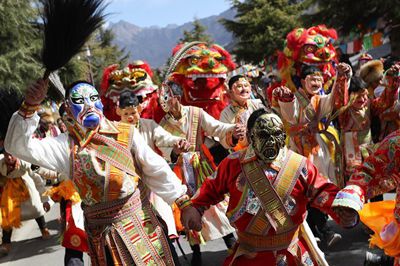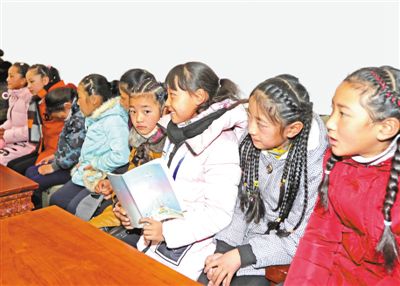2. Education and Human Capital The government of the Tibet Autonomous Region attaches great importance to the establishment of an education system, with a view of spreading technology and culture as well as increasing the value of human capital. By the end of 2008, Tibet had 1,017 schools of various kinds at all levels, including 884 primary schools, 117 regular secondary schools, ten secondary technical schools, and six colleges and universities. Now, an education system with local characteristics has taken shape, covering education for preschool children, primary and secondary education, higher education, vocational education and adult education (see Table 2 and Figure 12). Before the democratic reform, education was monopolized by monasteries. Only some 2,000 monks and children of noble lineage were studying at government-funded schools and private schools, which shut their doors on the average farmers and herdsman.
The illiteracy rate in Tibet was 95% before the democratic reform. To enhance the educational level and scientific and cultural qualities of the Tibetan people, the local government has increased spending on the establishment of an elementary education system, and made great efforts to eliminate illiteracy in young and middle-aged population. By the end of 2008, all 73 counties in the region had completed the task of "making six-year compulsory education available to all school-age children," with a 100% coverage rate. Some 311,800 students were studying in primary schools, and the enrollment rate was 98.5%. Seventy counties had realized the goal of "making nine-year compulsory education available to all school-age children," with a 90.2% coverage rate. The number of students studying in junior high schools reached 139,900, with an enrollment rate of 92.2%. The number of students receiving senior high school education is on the rise, as 44,600 students are now studying in senior high schools, with an enrollment rate of 51.2%. At present, the local population receives an average 6.3 years of education. For adults without school education, especially those under the age of 50, literacy courses and evening classes are provided, reducing the illiteracy rate to under 2.4% (see Fig. 13). |
- Home
- News |Tibet |Exclusive |China |World |Other Tibetan-Inhabited Area |Tibet through the Eyes of Foreigners |Related News
- Documents |White Papers |Others
- Photo |Politics |Economy & Society |Culture & Religion |Human & Nature |Beautiful Tibet |Other Tibetan-Inhabited Area |Exchanges |Related
- Video |News |Documentary |Micro-Video |Entertainment
- Art
- Tourism
- In Focus
- About Tibet








